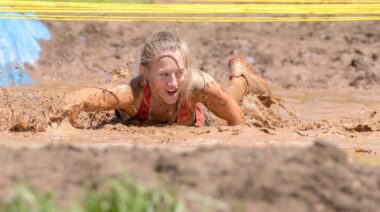Compression clothing has had a mixed history when it comes to scientific literature. With the number of brands and types of compression gear available, the mixed results aren’t surprising. A recent study in the Journal of Strength and Conditioning Research explored the effects of compression socks for runners.
How Compression Works
The increased blood flow that follows exercise can cause what is called blood pooling, or the tendency for blood to collect in one part of the body. Blood pooling inhibits venous return of blood, and thus prevents the recovery of muscles after exercise.
In theory, the pressure of compression garments can prevent blood pooling. The force of the garment restricts blood vessels enough to allow them to return blood against gravity more effectively, thus speeding recovery.
Study Design
33 athletes competed in a marathon and wore compression socks or placebo (non-compression socks) for 48 hours after the marathon to test the recovery assistance. The participants did a treadmill test two weeks before the marathon, and then again after the race.
For the treadmill test, the subjects ran to exhaustion, meaning the longer they were able to run, the better their performance on the test. The athletes put the socks on immediately after the marathon and wore them for two days. The follow-up treadmill test was a full two weeks later.
The results of this study were performance-oriented. The researchers didn’t examine some of the internal factors that altered recovery rates, but rather measured how rapidly performance improved.
Results
The athletes who wore the compression socks performed better than those who did not wear them. The athletes in the compression group were actually able to perform their treadmill test for a longer period of time than they did prior to the marathon – by almost a minute.
By contrast, the group not wearing the compression socks took about one minute longer to complete the second test. This indicates they weren’t fully recovered from the marathon, even two weeks later.
This means that there was a difference of nearly two minutes in total time between the two groups. The average total time of the treadmill test was about thirty minutes, so a two-minute increase in performance made for an important variance. Despite some mixed results for compression gear in the past, it seems as though they can make a substantial difference for runners.
References:
1. Stuart Armstrong, et. al., “COMPRESSION SOCKS AND FUNCTIONAL RECOVERY FOLLOWING MARATHON RUNNING: A RANDOMISED CONTROLLED TRIAL,” Journal of Strength & Conditioning Research 2014, DOI: 10.1519/JSC.0000000000000649
Photo courtesy of Shutterstock.






